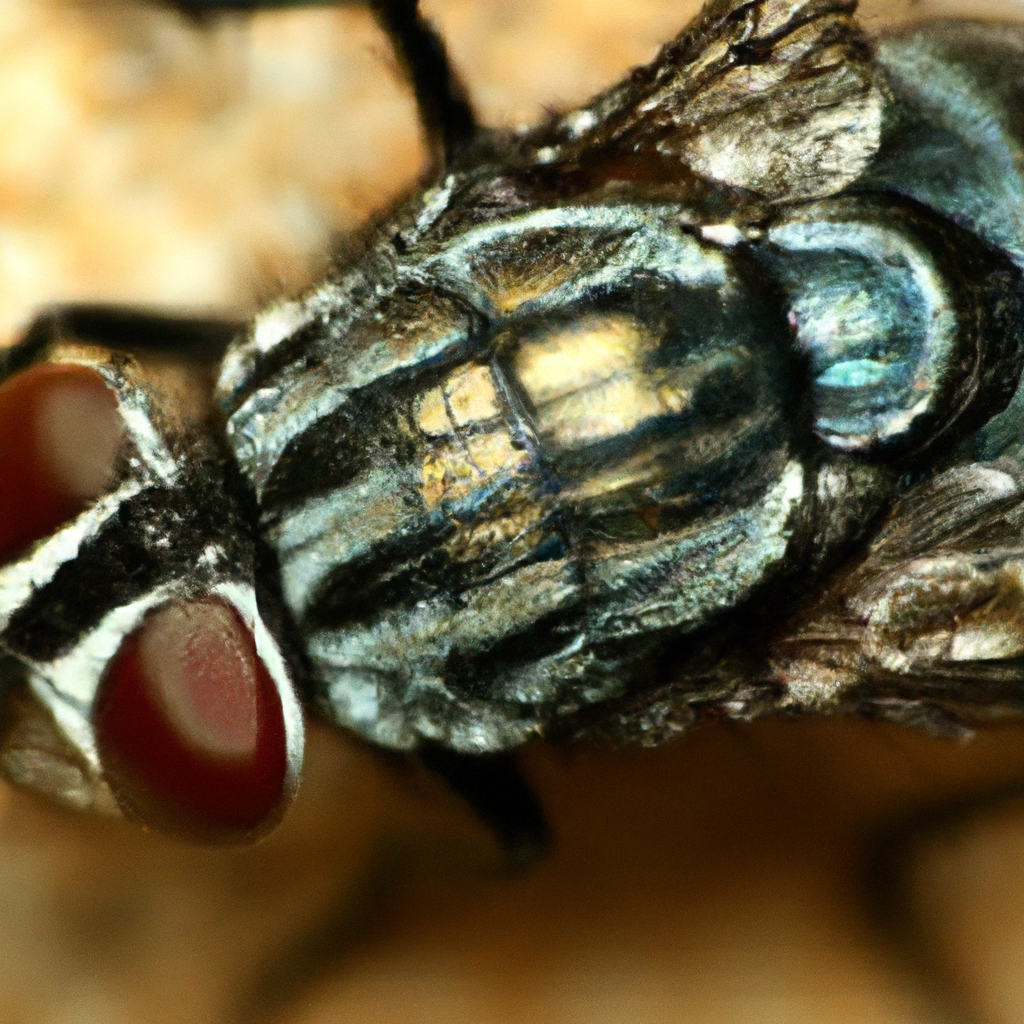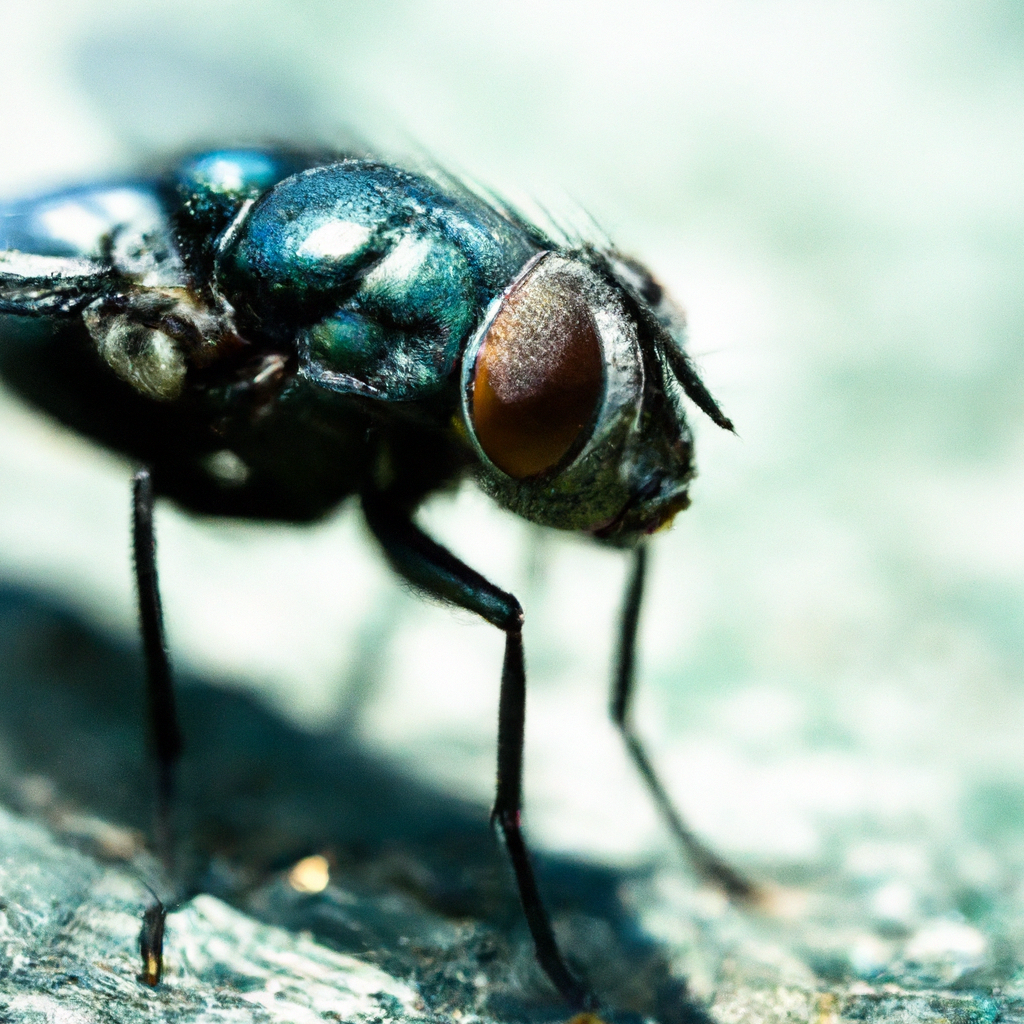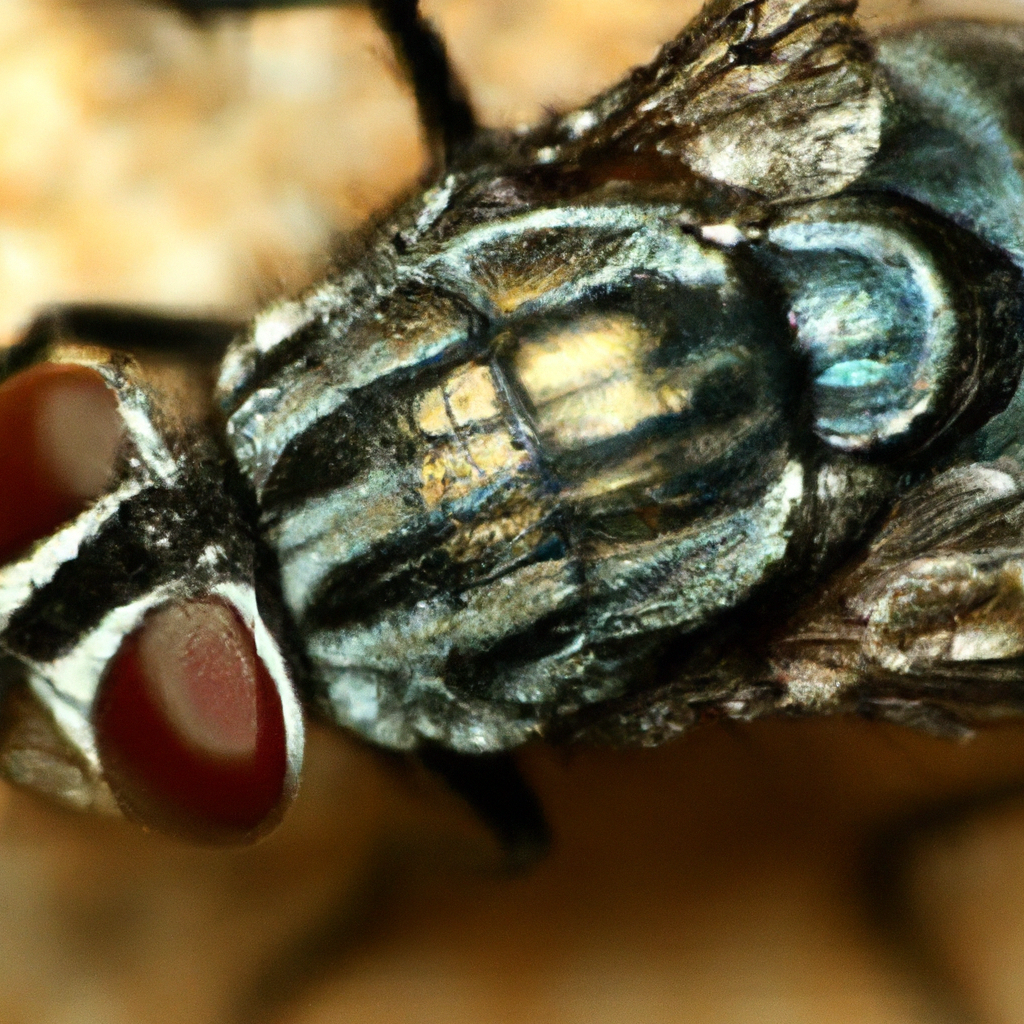Black flies, commonly found in various parts of the world, have often been a nuisance during warm weather. But what about their potential harm to humans? This article aims to explore the presence of black flies and the impact they may have on our well-being. Whether you have encountered these tiny, buzzing creatures or simply wish to learn more, let’s dig into the truth behind their potential harm and discover ways to coexist peacefully with these pesky insects.
Overview
Black flies, also known as buffalo gnats or turkey gnats, are small, blood-feeding insects that can be found in various parts of the world. While they may seem insignificant, these tiny creatures play an important role in ecosystems, but they can also cause discomfort and pose health risks to humans. In this article, we will explore the physical characteristics of black flies, their breeding and life cycle, the different species and their distribution, their feeding behavior, the effects they have on human health, management and control strategies, precautions and prevention methods, their significance in the ecosystem, and their economic impact. By understanding black flies and the challenges they bring, we can better protect ourselves, mitigate their effects, and appreciate their place in the natural world.
Introduction
Black flies are part of the Simuliidae family, which consists of over 2,000 species worldwide. These small insects typically measure between 5 and 15 millimeters, with females generally being larger than males. They are characterized by their short, robust bodies and dark coloration, which is often black or dark gray. Black flies are commonly found near bodies of flowing water, such as rivers, streams, and lakes, as they require fast-moving water for their reproductive cycle. They are most active during the warmer months, with peak activity occurring in the spring and early summer.

Physical Characteristics
Black flies have distinct physical features that help distinguish them from other insect species. Their wings are broad and often overlapping when at rest, giving them a humpbacked appearance. Their antennae are short and usually have several segments. One of the most noticeable traits of black flies is their mouthparts, which consist of scissor-like mandibles and a retractable proboscis used for blood-feeding. While males primarily feed on nectar and plant juices, females require a blood meal to obtain the necessary proteins for egg development.
Breeding and Life Cycle
The life cycle of black flies is fascinating and involves four distinct stages: egg, larval, pupal, and adult. Understanding this cycle can shed light on their population dynamics and help guide management and control strategies.
Egg Development
Female black flies lay their eggs on vegetation near the water’s edge. These eggs are usually laid in clusters or masses and are often attached to rocks or plants. The eggs are small and oval-shaped, ranging in color from cream to pale yellow or black. The development of the eggs is influenced by factors such as temperature and water quality. Generally, it takes about one to three weeks for the eggs to hatch, depending on environmental conditions.
Larval Stage
Once the eggs hatch, black fly larvae emerge and enter the larval stage. Larvae are aquatic and live in fast-flowing water, attaching themselves to rocks or submerged vegetation. They have a worm-like appearance and possess a series of tubercles and gills on their bodies that help them obtain oxygen from the water. Larvae are filter feeders, using hair-like structures to trap organic particles and microorganisms for food. This stage can last anywhere from several weeks to several months, depending on the species and environmental conditions.
Pupal Stage
After the larval stage, black fly larvae enter the pupal stage. Pupae are non-feeding and are enclosed in a protective cocoon-like structure called a pupal case. During this stage, the larvae undergo metamorphosis, transforming into their adult form. Pupae are often found attached to rocks or other objects in the water. Like the larval stage, the duration of the pupal stage varies depending on the species and environmental conditions but generally lasts for several days to a few weeks.
Adult Stage
Once the metamorphosis is complete, the adult black flies emerge from the pupal case and take flight. The adult stage is the reproductive phase of their life cycle. Males and females engage in mating, with males using their antennae to locate receptive females. After mating, females require a blood meal to nourish their eggs. It is during this phase that black flies can become a nuisance to humans, as they seek out hosts for blood-feeding.

Black Fly Species
The Simuliidae family includes numerous species of black flies, each with its own unique characteristics and geographic distribution. It is important to note that not all black fly species bite humans, and the severity of the bites may vary among species.
Types of Black Flies
There are different types of black flies found around the world, and their physical characteristics and behaviors can vary. Some notable species include Simulium venustum, which is prevalent in North America, Simulium damnosum, known for its presence in sub-Saharan Africa, and Simulium ochraceum, found in parts of Central and South America.
Geographical Distribution
Black flies can be found in various regions across the globe, including North America, Europe, Asia, Africa, and South America. They are particularly abundant near water bodies, such as rivers, streams, and lakes. The distribution and abundance of black flies can vary within regions, influenced by factors such as climate, habitat availability, and water quality. Understanding their geographical distribution is crucial for implementing effective control and management strategies.
Feeding Behavior
Black flies are hematophagous, meaning they feed on the blood of animals, including humans. However, not all black flies exhibit the same feeding behavior, and their host preferences can vary.
Host Preference
Different black fly species have varying preferences when it comes to selecting hosts. Some species are primarily attracted to humans, while others prefer to feed on other mammals, birds, or even reptiles. The exact factors that influence host preference are not yet fully understood, but factors such as body odor, carbon dioxide emissions, and visual cues may play a role.
Biting Process
When a female black fly is ready to feed, she locates a host by detecting body heat and carbon dioxide emissions. Once she lands on the host’s skin, the black fly uses its sharp mandibles to make a small incision and then inserts its proboscis to suck up blood. The bites themselves are often painless due to the presence of anesthetic compounds in the black fly’s saliva. However, the aftereffects can be quite uncomfortable for the host.
Effects on Human Health
While black flies may seem like mere nuisances, they can have significant impacts on human health. Their bites can cause allergic reactions, and in certain cases, they can transmit diseases.
Allergic Reactions
For some individuals, black fly bites can trigger allergic reactions. These reactions can range from mild to severe and may include symptoms such as localized redness, swelling, itching, and pain. In extreme cases, individuals may experience anaphylaxis, a potentially life-threatening allergic reaction that requires immediate medical attention. It is important for individuals who exhibit allergic reactions to black fly bites to seek medical advice to manage their symptoms effectively.
Bite Symptoms
After being bitten by black flies, most individuals will experience some discomfort. Common symptoms include itching, swelling, redness, and the formation of small, raised lesions. These symptoms can persist for several days or even weeks, depending on an individual’s sensitivity and immune response. Scratching the bites can lead to secondary infections, so it’s crucial to resist the urge to scratch and instead apply appropriate remedies to alleviate the itching and inflammation.
Disease Transmission
In certain regions, black flies are known to transmit diseases to humans. One of the best-known diseases associated with black flies is onchocerciasis, also known as river blindness. This parasitic disease is caused by the filarial worm Onchocerca volvulus, which is transmitted to humans through the bites of infected black flies. The larvae of these worms can migrate to various parts of the body, including the eyes, leading to vision impairment and blindness if left untreated. Fortunately, onchocerciasis control programs have made significant strides in reducing its prevalence in many affected regions.
Management and Control
Given the potential impact of black flies on human health and well-being, various management and control strategies have been developed to reduce their populations and mitigate their effects.
Personal Protection
One of the most effective methods of protecting oneself from black fly bites is to wear appropriate clothing. Covering exposed skin with long-sleeved shirts, long pants, and hats can significantly reduce the risk of being bitten. Additionally, applying insect repellents containing DEET or picaridin to exposed skin can act as a deterrent. It is important to follow the instructions on the repellent’s label to ensure proper and safe use.
Environmental Control
Controlling black fly populations at the source can be challenging due to their preference for fast-flowing water bodies. However, targeted approaches can be employed to reduce their breeding sites. This can involve the application of larvicides to water bodies to kill the immature stages of black flies. Additionally, the alteration of water flow patterns or the addition of organic materials that can degrade water quality may discourage black fly breeding. These approaches, when implemented as part of integrated pest management strategies, can help reduce black fly populations and alleviate their impact on communities.
Precautions and Prevention
As with any insect bite, taking precautions and implementing preventive measures can go a long way in reducing the likelihood of being bitten by black flies.
Avoiding Black Fly Bites
Avoiding known black fly-infested areas during peak activity times, such as dawn and dusk, can significantly reduce the risk of being bitten. When planning outdoor activities, consider the presence of black flies and choose times and locations when their activity levels are lower. Additionally, staying indoors during periods of high black fly activity can provide temporary relief from their presence.
Protective Measures
In addition to avoiding black fly-infested areas, wearing light-colored clothing can make it easier to spot and brush away these insects. Applying physical barriers such as head nets, long-sleeved shirts, and pants treated with insecticides or permethrin can provide an added layer of protection. Installing fine mesh screens on windows and doors can also help keep black flies from entering homes or buildings.
Significance in the Ecosystem
While black flies may be considered pests, they serve important roles within the ecosystems they inhabit.
Ecological Role
Black flies are vital components of freshwater ecosystems. As filter feeders during their larval stage, they play a crucial role in maintaining water quality by consuming organic matter and microorganisms. By doing so, they help prevent excessive nutrient buildup and contribute to the overall health and balance of aquatic environments.
Pollination
Some species of black flies, particularly those found in tropical regions, play a role in pollination. These flies visit flowers to feed on nectar or pollen, inadvertently transferring pollen from one flower to another. This process facilitates plant reproduction, ensuring the survival and genetic diversity of various plant species.
Food Source
Black flies, both in their larval and adult stages, serve as an essential food source for other organisms. Birds, fish, amphibians, and predatory insects all rely on black flies as a part of their diet. The presence of black flies in ecosystems helps sustain these species and contributes to the overall biodiversity of the environment.
Economic Impact
The presence of black flies can have significant economic implications, particularly in industries such as tourism, agriculture, and livestock management.
Losses in Tourism
Areas known for their black fly populations may experience a decline in tourist visits, as the prospect of being swarmed by these insects can deter potential visitors. This can result in decreased revenue for local economies heavily reliant on tourism, impacting businesses such as outdoor recreational activities, accommodations, and dining establishments.
Agricultural Impact
Black flies can also wreak havoc on agricultural crops. When abundant, they can cause significant stress to livestock, affecting their productivity and overall health. Additionally, black flies can be detrimental to crops by damaging plant tissues and inhibiting growth. Infestations can lead to reduced crop yields and increased costs for farmers due to the need for pest management measures.
Impact on Livestock
Livestock, such as cattle and horses, are particularly susceptible to the nuisance and potential health effects of black fly bites. High black fly densities can cause extreme stress and discomfort for animals, leading to reduced weight gain, compromised milk production, and general discomfort. Implementing management strategies to minimize black fly populations in livestock areas is crucial for maintaining the health and welfare of these animals.
Conclusion
In conclusion, black flies may be considered nuisances due to their biting behavior and the discomfort they can inflict on humans. However, they play vital roles in ecosystems, such as maintaining water quality, contributing to pollination, and being a food source for various organisms. Understanding the life cycle, feeding behavior, and geographical distribution of black flies allows us to implement management and control strategies to mitigate the impact they have on human health and the economy. By taking precautions to avoid black fly bites, we can coexist with these insects while appreciating the essential roles they play in the natural world.




